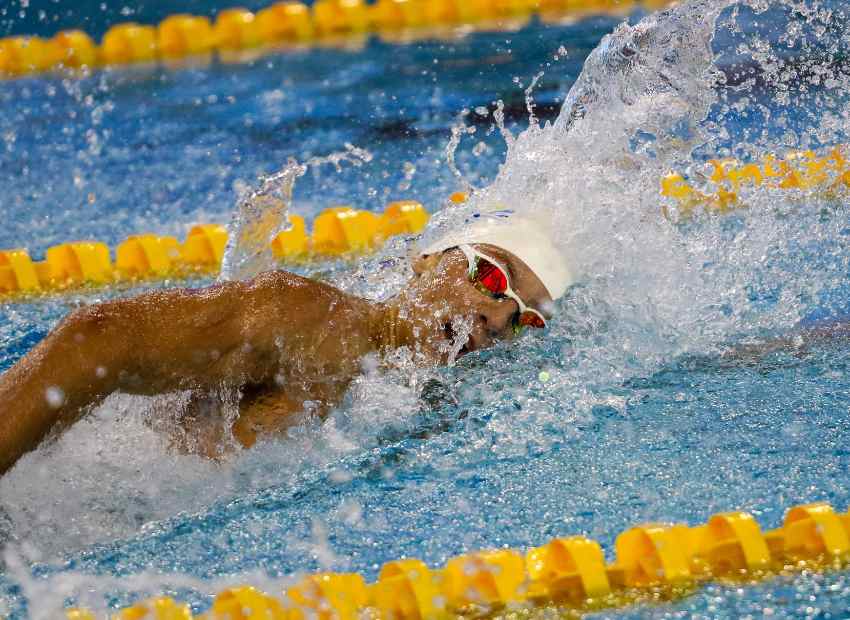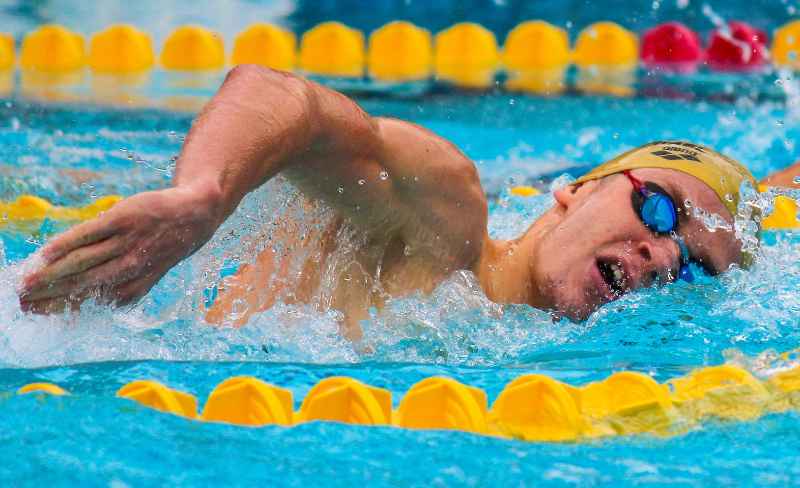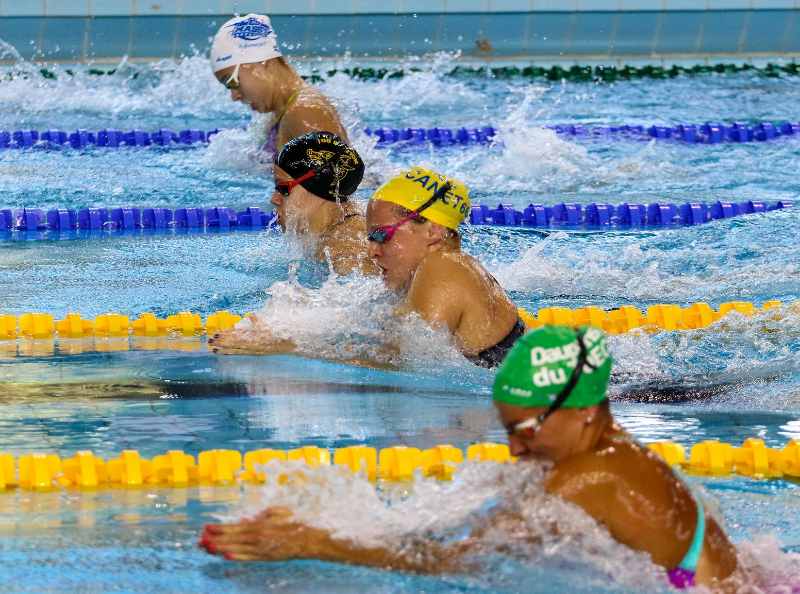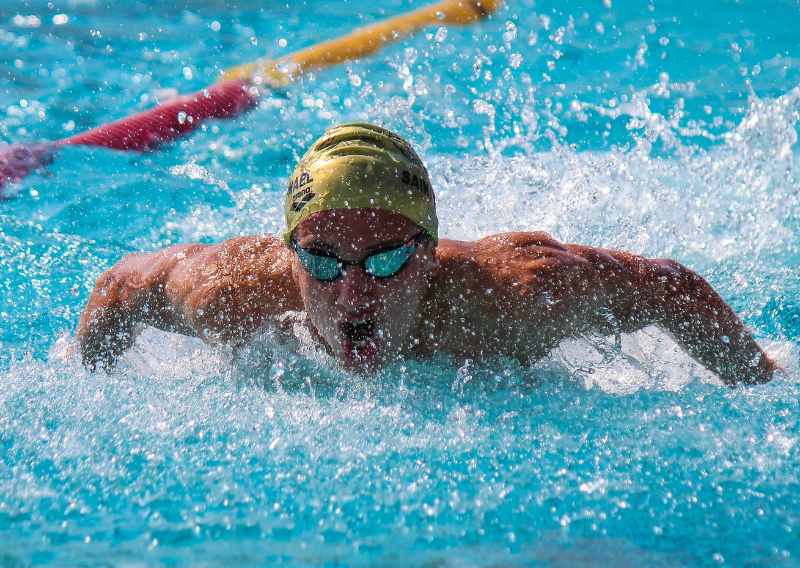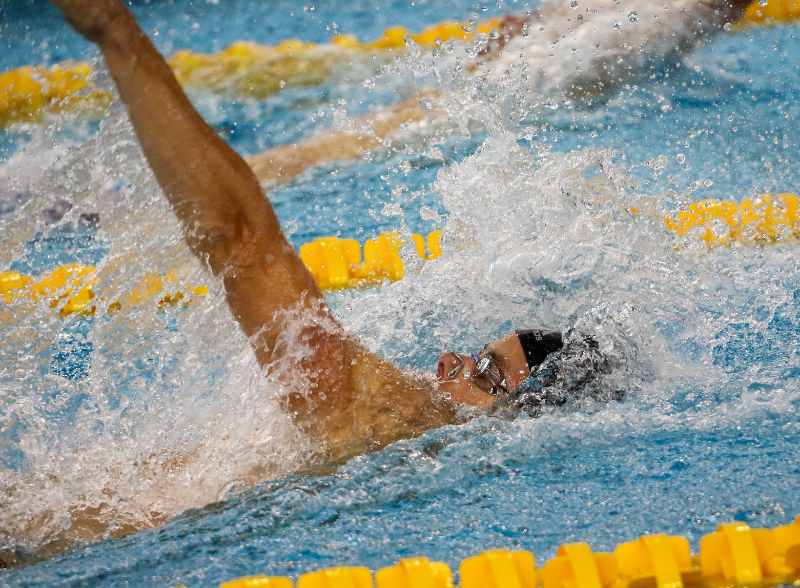Curious about the swimming strokes and their main differences? Here’s a closer look at the four strokes, including key features, history of each, and more.
The four main swimming strokes are freestyle, breaststroke, backstroke and butterfly.
Competitive swimmers know well the intricacies and challenges of each swim stroke.
In this guide, we will take a deeper look at the four swimming strokes, including key features, benefits, and challenges of mastering each.
Let’s dive right in.
Freestyle
Freestyle (or front crawl or the Australian crawl) is one of the first strokes most of us learn when we are tadpoles.
Doing the freestyle properly requires timing your arm and shoulder rotation with a breath to the side, all the while unilaterally kicking your feet for added propulsion and balance.
Key features of freestyle:
- Has the most races in competition (50, 100, 200, 400, 800 and 1500m distances are all raced at the Olympics)
- Only swim stroke that is in all of the relays
- Is the fastest stroke when you look at average speed
- Majority of the speed comes from the “catch”
- Swimmers use a two-beat or six-beat kick
Breaststroke
Breaststroke is the oldest swimming stroke on the books, with the English holding organized swim competitions featuring breaststroke in the 19th century.
Breaststroke is one of the harder strokes to master because of the intricate timing between the arm pulling motion and the kick.
Breaststroke has its own specialized push-off, with the underwater pull-out, something that is unique among the four swimming strokes.
(Underwater pull-outs—and swimmers illegally doing dolphin kicks—have also been a source of regular controversy in international competition1,2.)
Breaststroke is the slowest stroke of the four, with the world record in the 100m breaststroke about five seconds slower than the next slowest stroke (backstroke).
Of the four strokes, breaststroke relies most on the kicking motion for generating speed, with about half the propulsion coming from the breaststroke kick.
The breaststroke is very beginner-friendly as it can be performed without submerging the head in the water. This quality also makes it a favorite of leisure swimmers.
Key features of the breaststroke:
- First swim stroke done in organized competition
- Slowest swim stroke of the four
- Raced in three distances in international competition (50, 100 and 200m distances)
- The timing between kick and pull is the hardest part of mastering the breaststroke
- Can be done without submerging the face, making it popular with recreational swimmers
Butterfly
The butterfly stroke is the hardest of the four, featuring an over-the-water double-arm recovery that requires excellent shoulder mobility and coordination.
The butterfly originated out of the breaststroke. Swimmers during the early 20th century were experimenting with ways to reduce drag, and found that an over-the-water recovery was significantly faster when doing breaststroke.
This led to the dolphin kick being used in the stroke and a realization that a new stroke had been created. By 1956, the butterfly had its own events in Olympic competition.
Besides the two-arm recovery, the two-arm pulling motion actually gives the butterfly the distinction of being able to generate highest peak speed in the water compared to other strokes.
This advantage is fleeting, however, as swimmers slow during the arm recovery phase to below the peak median speed of the freestyle stroke.
The butterfly stroke features two dolphin kicks per stroke cycle.
The greatest swimmer of all time, Michael Phelps, made his first Olympic team in 2000 for the 200m butterfly.
Key features of the butterfly stroke:
- Fastest stroke when measured by peak speed
- Features a two-arm recovery and swimmers perform two kicks per arm cycle
- Most strenuous of the four swimming strokes, burning the most calories of the four
- Requires excellent shoulder mobility to perform the double overhead motion
- Butterfly is an undulating stroke like the breaststroke
Backstroke
As you can guess by its name, the backstroke is performed on your backside.
It’s similar to the freestyle because of its unilateral arm motion, hip rotation (a slight side-to-side rotation) and the flutter kick motion of the feet.
Propulsion is mostly generated by the arm pull motion, with the legs being used for some propulsion and balancing the body properly for reduced drag.
Backstroke events start in the water to avoid a swimmer diving in and being on their front. With the exception of when a backstroker pulls into the wall to perform a flip-turn, it’s illegal for the swimmer to be on their front.
Key features:
- Only stroke where the face is out of the water
- Second-slowest swim stroke
- Backstroke leads off the medley relay event
- Raced in 100m and 200m distances at the Olympics (plus the medley relay)
Medley
While not a “stroke” in of itself, medley events take all four of the swim strokes and create an event out of them.
The medley events are an ordered combination of the four strokes.
Medley events in swim meets happen in two forms:
Individual medley. This is when a swimmer performs the four swim strokes sequentially, starting with butterfly, backstroke, breaststroke and finishing with freestyle. Individual medley events are raced in 200m and 400m distances at the Olympics.
Medley relay. This is a team event, with four swimmers racing the four different swim strokes, starting with backstroke, breaststroke, butterfly, and ending with freestyle. The medley relay is competed as a 4x100m event in the Olympics, with both same sex and mixed (two males, two females) events.
Side-stroke
Sidestroke is actually one of the precursors to the freestyle!
Old-school sidestrokers found they could move faster through the water by recovering their arms over the water compared to under it.
Side-stroke is taught primarily as a lifesaving and water-safety skill and is not used in competition or swim training.
Swimming Strokes – FAQs
What is the fastest swimming stroke?
The fastest stroke for peak speed is the butterfly. Because swimmers use two arms to propel themselves through the water, they are briefly the fastest swimmer in the pool.
During the recovery, however, butterflyers lose some of that momentum.
Freestyle is the fastest swimming stroke by median speed because of its unilateral characteristics—one arm is almost always propelling the swimmer through the water.
The fastest a swimmer moves through the water is actually not when they are swimming at all, but off of the dive when they are in a tight streamline followed by when they push off the wall.
Swimmers can also attain “faster than swimming” speeds with proficient underwater dolphin kicking.
How many swimming strokes are there?
There are four swim strokes, including butterfly, backstroke, breaststroke, and freestyle.
There are variations (also known as swim drills) that include single and double arm variations (double-arm backstroke, for example).
Side-stroke is a “stroke” but is not officially regarded as one in competitive swimming events.
What is the IM order of swim strokes?
The individual medley is a four stroke discipline that is done in lengths of 200m and 400m in international competition. The four strokes, in order, are butterfly, backstroke, breaststroke, and freestyle.
Medley relays use a slightly different order, starting with backstrokers in the water as they cannot dive in and turn on their back. Medley relays order the strokes as backstroke, breaststroke, butterfly, and freestyle.
Why are there different strokes in the Olympics?
The first stroke used in organized competition was the breaststroke, introduced by the English, with swim meets taking place in the early 1800s in indoor swim pools.
At a swim competition in London in 1844, visiting Native Americans competed in races performing what was the building blocks of freestyle, a windmill arm motion and “up and down” movement of the legs1.
This would later evolve into the Australian crawl as swimmers experimented with arm and leg movements to increase propulsion.
Butterfly emerged from breaststroke, with swimmers using an over-the-water recovery when doing breaststroke to attain an advantage.
Olympic competition is a way to judge how progressions in technique are being made by timing races.
Inevitably, the technique of winning swimmers influences the next generation of swimmers, leading to continual evolution in technique and form.
More Stuff Like This
How to Start Lap Swimming. Want to start swimming? Here’s the beginner lap swimmer’s guide to everything you need to know about getting in shape and having fun at the lap pool.
How to Start Swimming for Exercise. Getting started with this wonderful sport can feel intimidating. Here’s your starter kit for getting started with lap swimming.
How to Swim Faster Freestyle. Ready to take your freestyle to the next level? Here are the most important things you need to know about swimming faster freestyle.

